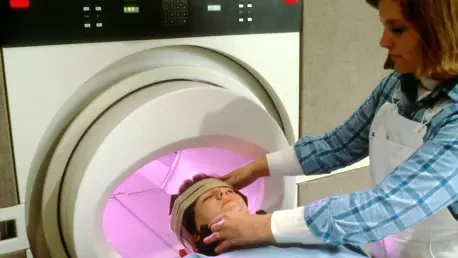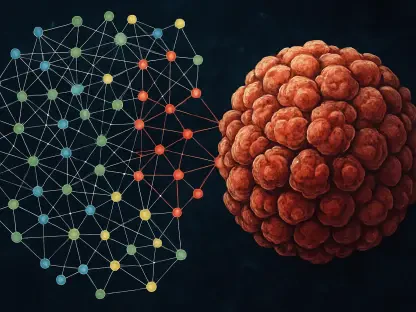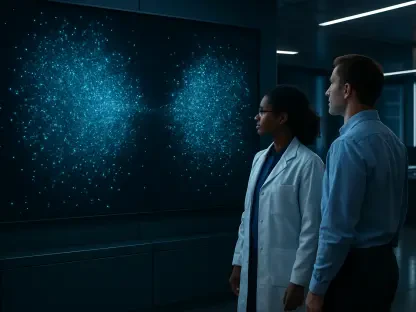In an unprecedented move, President Donald Trump’s fiscal strategy for 2026 proposes a staggering $18 billion reduction in health research funding from the U.S. National Institutes of Health (NIH), sending shockwaves through the academic radiology community. Researchers face intense financial uncertainty as they confront potential disruptions to ongoing and future studies critical to medical innovation. This fiscal reformation, labeled “the skinny budget,” is set to redefine the landscape of NIH’s support, prompting urgent discussions among institutions regarding the sustainability of academic research.
Impact of Budget Cuts
Financial Instability in Medical Research
The fiscal adjustments spearheaded by the new budget policy are poised to create financial turmoil within medical research sectors, with institutions grappling to adjust to the unexpected monetary limitations. “The skinny budget” intends to overhaul the distribution of funds, which raises profound concerns about the continuity and stability of academic studies. Radiology, in particular, along with other critical medical fields, faces dire consequences as traditional funding streams are altered or possibly diminished. Research teams accustomed to relying on NIH grants for groundbreaking projects must now consider alternative sources to maintain their work and contribute to medical progress.
Effects on Radiology and Broader Health Research
Radiology and other health research fields are severely impacted by the strategic redirection of NIH funding, underpinned by the “Making America Healthy Again” initiative. This directive aims to prioritize certain health-related studies by reallocating resources—emphasizing research on chronic diseases and emerging epidemics. However, it notably sidelines essential studies on areas such as climate change, gender ideology, and racial dynamics that contribute to holistic healthcare understanding. The ramifications for radiology are profound, potentially stifling advancements in imaging technology and related studies, which are crucial for accurate diagnostics and patient care. As researchers attempt to navigate these challenges, the landscape of health research may see significant shifts in focus and funding allocation.
Political Influence on Scientific Inquiry
Shifting Funding Priorities
The NIH funding strategy embodies the political dynamics steering decisions on what types of research receive support and which areas are relegated to the margins. Chronic diseases and epidemic studies emerge as favored priorities, leaving behind critical yet politically sensitive domains such as climate science, gender theory, and racial studies. The pronounced political influence is shaping scientific inquiry, altering traditional research landscapes, and promoting an environment where certain topics might either receive intensified attention or face exclusion from competitive funding opportunities. Researchers are left to reconcile these shifts with their commitment to exploring diverse scientific avenues, all while trying to secure funding within the redefined parameters.
Consequences for the Research Community
Researchers are voicing growing concerns over the consequences that the restructured NIH budget holds for their studies and continued viability in the field. As grant cancellations loom, institutions nationwide foresee turbulent shifts in how academic research is funded, assembled, and sustained. According to recent data from the Association of American Medical Colleges, approximately $1.9 billion in NIH grants have already been terminated. These cutbacks have hit medical schools and hospitals the hardest, stripping over $1 billion from their coffers. Specifically, R01 grants, which represent a crucial funding mechanism for independent research projects, are bearing a significant portion of these losses. Such cutbacks threaten to undermine the reach and scope of research initiatives, ultimately posing risks to the broader scientific community.
Response and Adaptation by Academic Institutions
Efforts to Secure Alternative Funding
In response to these budgetary challenges, academic institutions and researchers are proactively seeking alternatives to secure financial resources. Efforts to adapt involve the exploration of diverse funding avenues, ranging from private industry partnerships to alternative grants. Initiatives are emerging where healthcare organizations form strategic alliances to pool resources for sustaining research endeavors. Advocates are also calling for congressional intervention, rallying support to challenge the budget cuts and protect essential medical exploration. By engaging stakeholders across spectrums, institutions aim to counteract fiscal disruptions while preserving critical scientific inquiry.
Challenges in Retaining Talent
The precarious funding landscape creates additional hurdles for retaining young talents actively shaping the future of medical research. Potential delays in grant reviews, administrative roadblocks, and uncertainties regarding award issuance contribute to an unstable environment where promising researchers may opt to pursue opportunities overseas or within private sectors. Academic communities are grappling with the threat of a potential exodus of innovative minds. Groups like the Association of Academic Radiology express growing unease regarding difficulties faced in attracting and retaining skilled professionals. Notably, this trend reflects a global competitive environment where countries or sectors with stable funding and less political interference may lure top talent away.
Advocacy and Collective Action
Promotion of Robust NIH Funding
As the NIH budget plans continue to reshape the contours of scientific inquiry, academic societies are launching campaigns to safeguard critical funding channels. Organizations like the Association of American Medical Colleges and the American College of Radiology stress the essential role that sustained NIH support plays in fostering breakthroughs across medical disciplines. These advocacy efforts work to highlight the urgent need for robust financial backing to nurture medical advancements that contribute significantly to public health outcomes. Through collective action, stakeholders strive to secure a future where groundbreaking research continues to drive progress in medicine.
Rallying Support from Stakeholders
In a surprising and impactful decision, President Donald Trump’s fiscal plan for 2026 suggests an enormous cut of $18 billion from the health research budget of the U.S. National Institutes of Health (NIH). This decision has reverberated through the academic radiology community, causing significant concern. Researchers now grapple with severe financial uncertainty, facing potential interruptions to both ongoing and future research that are crucial for medical advancements. This proposed budget cut, dubbed “the skinny budget,” could dramatically reshape the NIH’s support structure. As a result, there has been a flurry of urgent discussions among academic institutions about the long-term viability and sustainability of their research projects. The academic community fears that reduced funding could stifle innovation and lead to setbacks in vital health studies, ultimately affecting the progress of medical science. Therefore, these budgetary considerations are not just financial adjustments; they are actions with far-reaching consequences on the landscape of academic research in the United States. The concern extends beyond budgets, as the potential impact could be detrimental to implementing groundbreaking technologies and innovations essential to improving human health and well-being.









